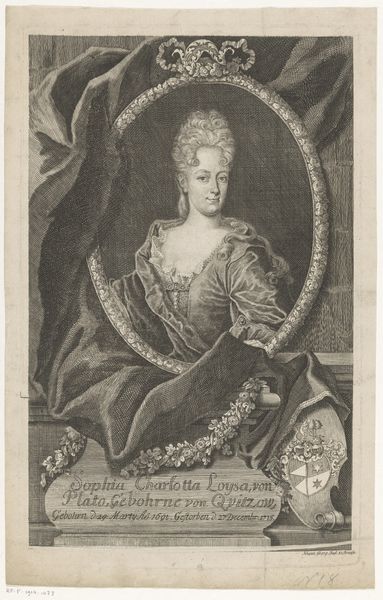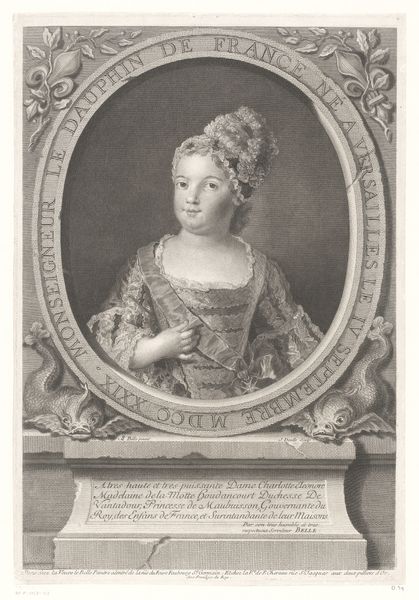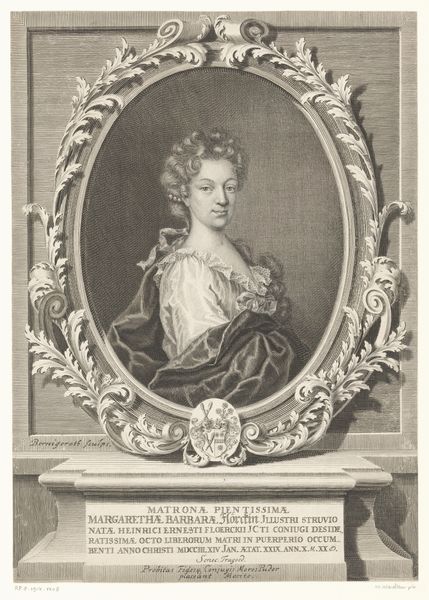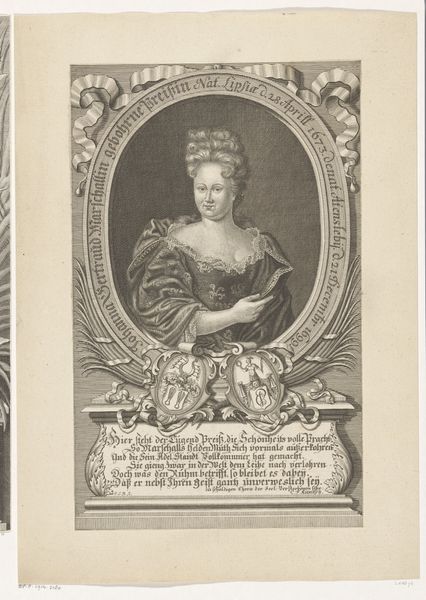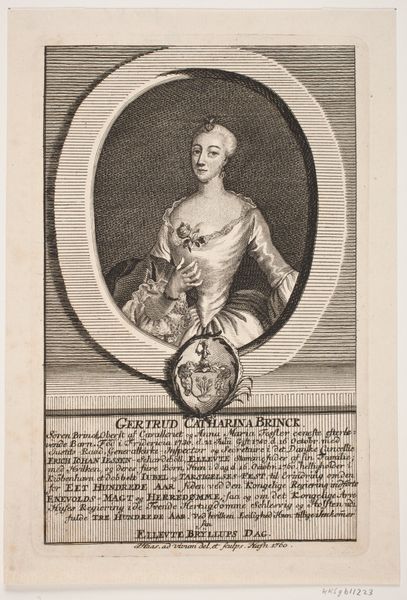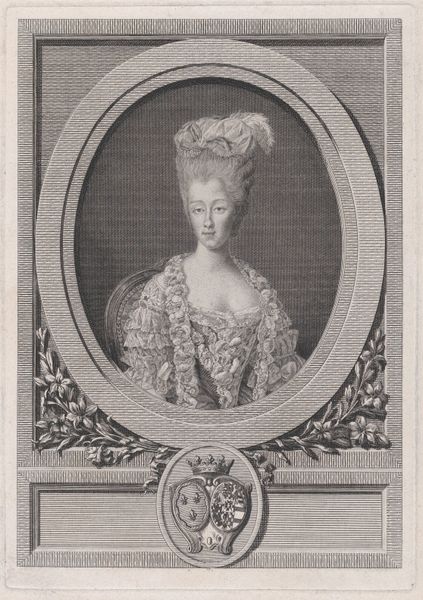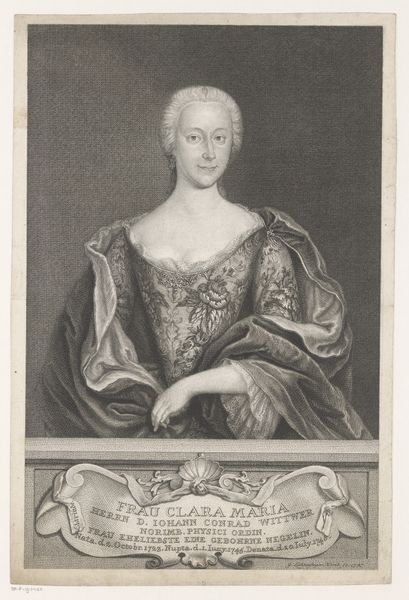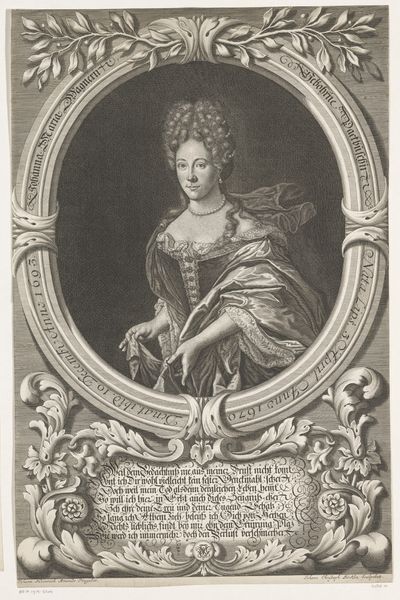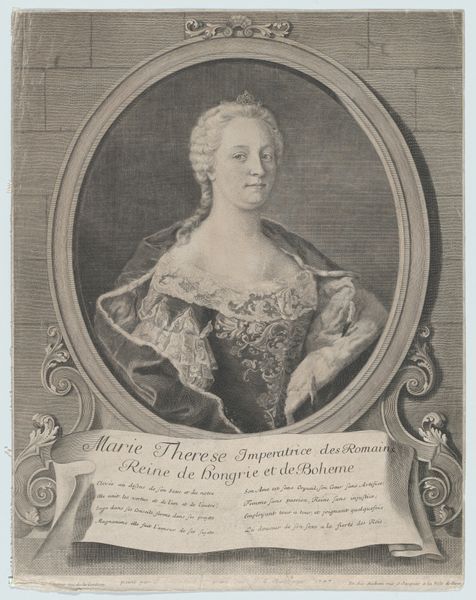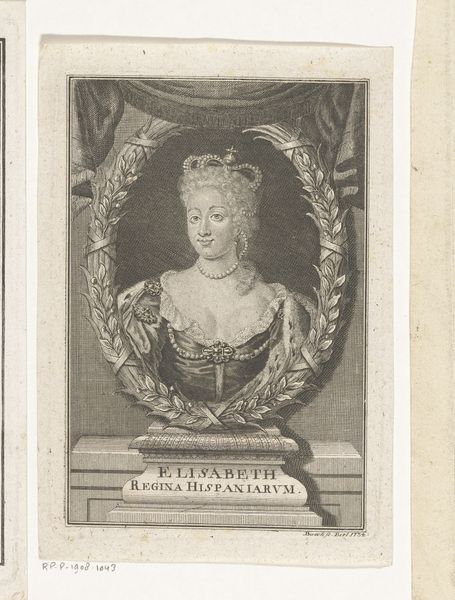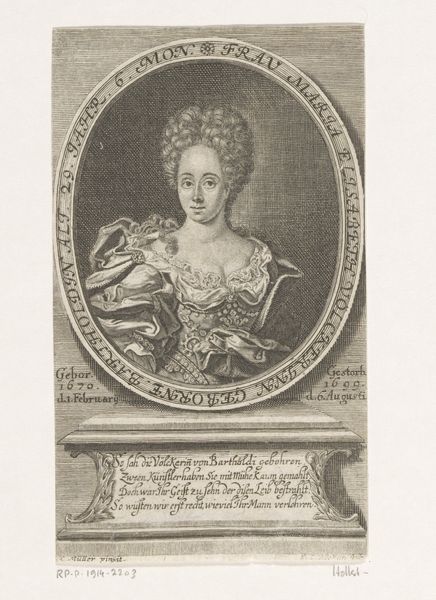
Dimensions: height 413 mm, width 291 mm
Copyright: Rijks Museum: Open Domain
Curator: So, this is Louis Jacques Cathelin's "Portret van Marie Antoinette, koningin van Frankrijk", created around 1775. It’s an engraving, showcasing the queen during her early years in France. Editor: My first thought? Aloof. The framing within the oval almost feels like she’s peering down at us. And those incredibly ornate clothes! It’s almost suffocating. Curator: Indeed, the portrait operates within the established visual rhetoric of Rococo portraiture. The framing, the floral decorations, the intricate details of her attire—all contribute to an image of refined elegance and power. Editor: But is it actually empowering? She looks so constrained, like a gilded bird in a cage. I'm curious, was this image designed to project her authority, or was it more about presenting her as an object of beauty and status? Curator: The portraits of Marie Antoinette played a significant role in constructing and disseminating her image. Considering her Austrian heritage and the political complexities of her marriage to Louis XVI, these portrayals served to solidify her position within the French court and society. Her identity was definitely up for grabs, negotiated between representing the Austrian empire, her role as future Queen and so on. Editor: And those heavy clothes are almost like armour. Beautiful armour, sure, but armour nonetheless. It suggests someone constantly on guard, aware of being watched and judged. Maybe there is something of interest here if we read beyond the surface. Curator: Absolutely. Think about the socio-political climate in France at the time. Marie Antoinette was a figure of both fascination and controversy. This portrait can be analyzed in terms of gender, power, and the construction of identity within a patriarchal and class-stratified society. It almost begs us to interrogate these symbols of wealth, class and privilege that she embodied. Editor: I guess you are right... Beyond the beautiful frame and costume, there's a sense of a very complex woman caught up in events way bigger than herself. It's melancholic now that you mention it. Curator: Ultimately, the artwork gives insight into a critical period in history, reflected by how Marie Antoinette was portrayed. A time when class, gender and the construction of image played out in dramatic and consequential ways. Editor: I agree. Seeing it from that perspective gives me something new to chew on, for sure. There's an intriguing push and pull between surface and the underlying societal forces it represents.
Comments
No comments
Be the first to comment and join the conversation on the ultimate creative platform.

